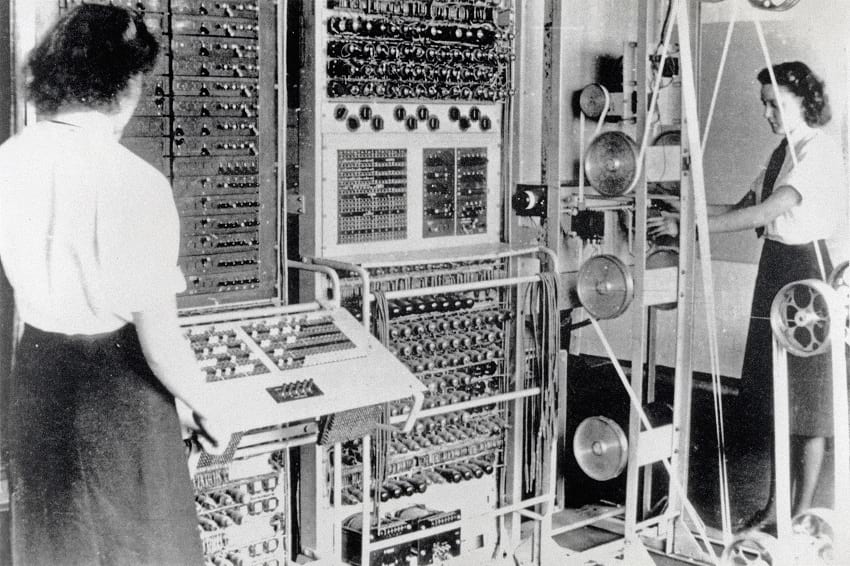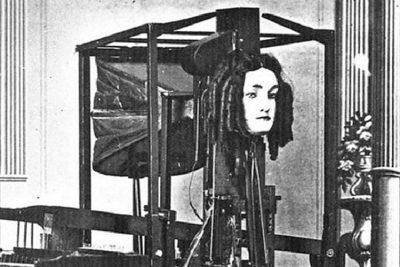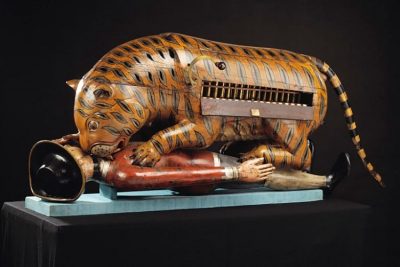Colossus Computer: A WWII Era Cipher Machine was the First-Ever Programmable Computer
Share

The colossus computer being operated by two Wrens. (The National Archives)
The origin of arguably one of the greatest modern inventions of man remains somewhat unknown to a major section of the world’s populace. We always, however, tend to forget the point of inception for all these geniuses, that is, the Colossus Computer. This was the first-ever programmable computer that was made in the history of technology.
The time of the Second World War witnessed a lot of rapid technological advancements that were necessary for the War. It birthed a number of inventions that are useful even today, while some others have provided the starting point to another major invention. The Colossus Computer was one such invention of the time by British code breakers. Its use was the cryptanalysis of the Lorenz Cipher. A stroke of luck and a group of absolute geniuses with a singular agenda was the formula that brought to life this critical invention.
Colossus computer: The secret of Bletchley Park
The German military used meticulous electronic transmissions to send important messages during the War that were intercepted by the British through two methods. One was the Enigma that used Morse code. The other is the less popular, codename Fish, that used electric teletypewriter technology to transmit messages between Hitler and his army high command in Berlin. Fish was a cipher machine, Lorenz SZ – 40/42, that the British called “Tunny.” In 1942, a lengthy technical battle later, the British code breakers finally succeeded in deciphering Tunny. The Colossus computer was consequently built to perform a fundamental function in this process at electronic speed. Prior to the invention of the Colossus, these British code breakers came out with a similar but much less reliable teleprinter cipher machine.

The Lorenz SZ42 machine. (TedColes / Wikimedia Commons)
Heath Robinson: WW2 codebreaking machine
Max Newman produced the functional specification of Heath Robinson and its engineering design was put together by Frank Morrell. The concept of the machine was brought to life, but the machine was anything but useful. The electromechanical parts were slow and it failed to synchronize the two test- paper tapes. One had the enciphered message, and the other had a part of the keystream of the Lorenz machine. Following this, the Colossus was created by the Department of Communications of British Foreign Office, which used electronic circuits for deciphering messages sent over the radio. The team was lead by Thomas Flowers and Maxwell Newman with important roles by Alan Turing and C. E. Wynn-Williams. The project was carried out in great secrecy at Government Code and Cipher School in Bletchley Park.

Tommy Harold Flowers. (Wikimedia Commons)
Tommy Flowers and his magic beanstalk
Tommy Flowers designed the Colossus. He was initially brought in to design the Heath Robinson’s combining unit but the function of tapes failed to impress him. He then came up with a design of his own that used an electronic analogue of the Lorenz machine and completely rejected the use of tapes. This design was then presented to Maxwell Newman, but the idea of one to two thousand thermionic valves (vacuum tubes) within a single machine was met with scepticism. Consequently, Tommy Flowers’ proposal was rejected.
Several other Robinsons were ordered thereafter. Eventually, persistence on Flowers’ part resulted in the birth of Mark 1 Colossus with advancements to the design. It had a record of one thousand and six hundred thermionic valves.
Colossus: The breakthrough
German operators often used the same wheel settings for two different messages which were famously called ‘depths.’ The interception of this was what pushed the British to the breakthrough they achieved in 1941. The operation of Tunny had an important process which included the operator sending a message of an unenciphered group of twelve letters that informed the receiver the starting position of the twelve letters. As per this, whatever the first letter was, the receiver would set his first psi-wheel position corresponding to the instruction. Two messages with the same indicator were all that the British needed to incur a depth. Since the first was corrupted due to atmospheric noise, the message was resent but with little deviations and abbreviations. An identical message would leave the British none the wiser.
The end: Start of a new beginning
The end of the War was accompanied by orders of Churchill for the destruction or dismantling of the Colossus machines. However, two of the machines were kept aside during the Cold War. Unfortunately, they were met with the same fate when technological advancements outgrew them. In 1991, however, saw the resurrection of the idea of the reinvention of the Colossus by Tony Sale. Thus began the journey of recreating this legendary machine with very limited knowledge about it. In 1996, the first part of the project was put on display in the presence of HRH, the Duke of Kent, and Tommy Flowers. The project reached its completion in 2007 and it was staged in an international Cipher Challenge contest.
As Flowers said,
“…I was told that the secret of Colossus was to be kept indefinitely… I was naturally disappointed. I was in no doubt, once it was a proven success, that Colossus was a historic breakthrough…”
It was perhaps the most heartbreakingly poignant ends that could be given to a “war hero” of the Colossus’ magnificent stature.

The reconstructed version of colossus computer at The National Museum of Computing, Bletchley Park. (TedColes / Wikimedia Commons)
Life has become tenfold simpler than it used to be back in the olden days. Operating a computer today has become child’s play, requiring you to simply open the appropriate program. This was not a possibility with the Colossus, because it was not able to store programs. To make it function as per requirements, modifications to the machine was required that included wiring, switching and plugging meticulously by hand. This entire process was a tiresome and hectic one, with the operators taking up almost three weeks to set up and debug a program. These machines are more famously called “program-controlled” computers. This sets up a comparison with the modern-day computers which are “stored – program” computers. The basic principle of the stored computer is only a thread of a long thought-process pulled out of Turing’s mind, in 1936. It is fascinating how far we have come with technology and how far we are yet to go.
Enjoyed this article? Also, check out “Deep Blue – The IBM Chess Computer that Beat Chess Grand Master Garry Kasparov in 1997“.
Fact Analysis:
STSTW Media strives to deliver accurate information through careful research. However, things can go wrong. If you find the above article inaccurate or biased, please let us know at [email protected]













